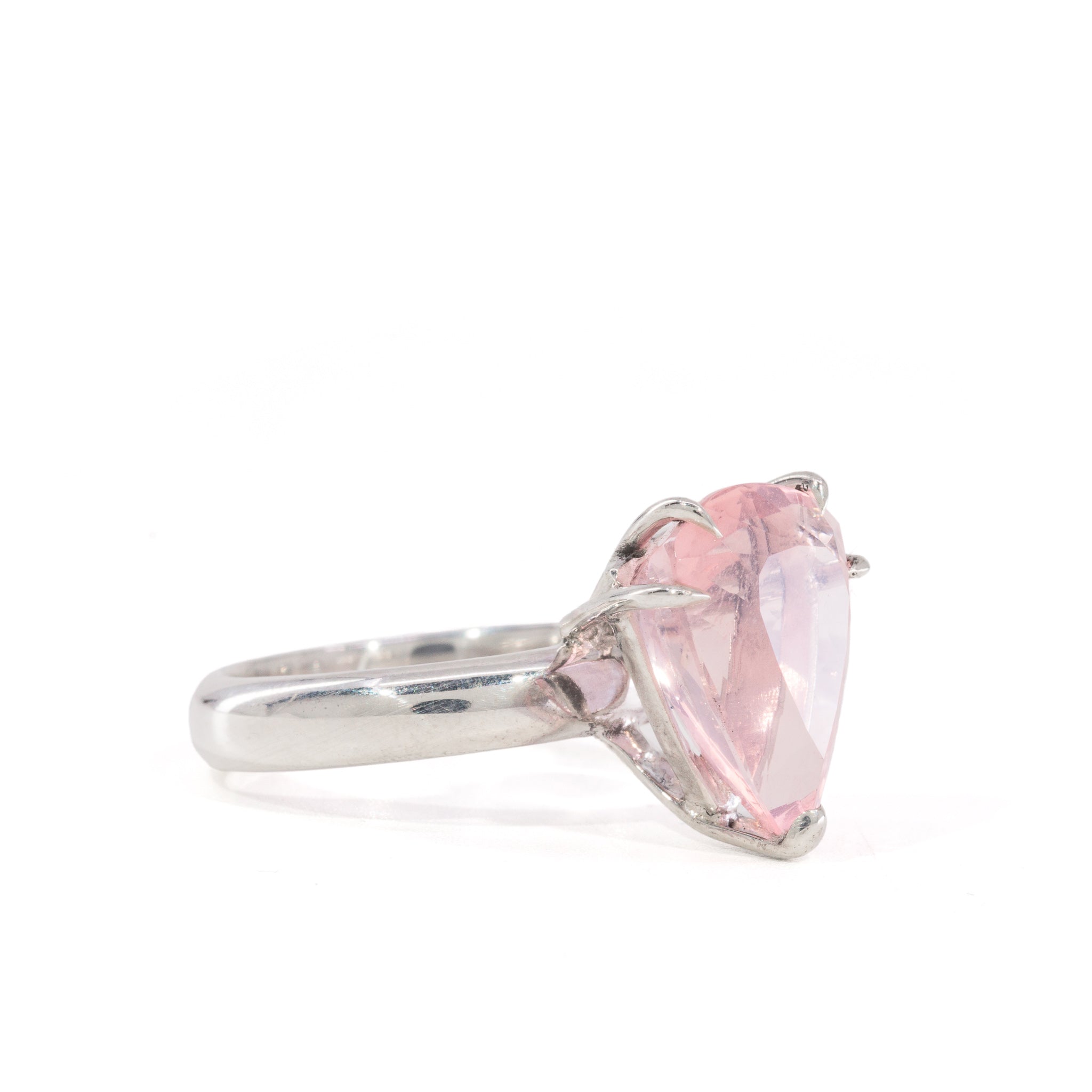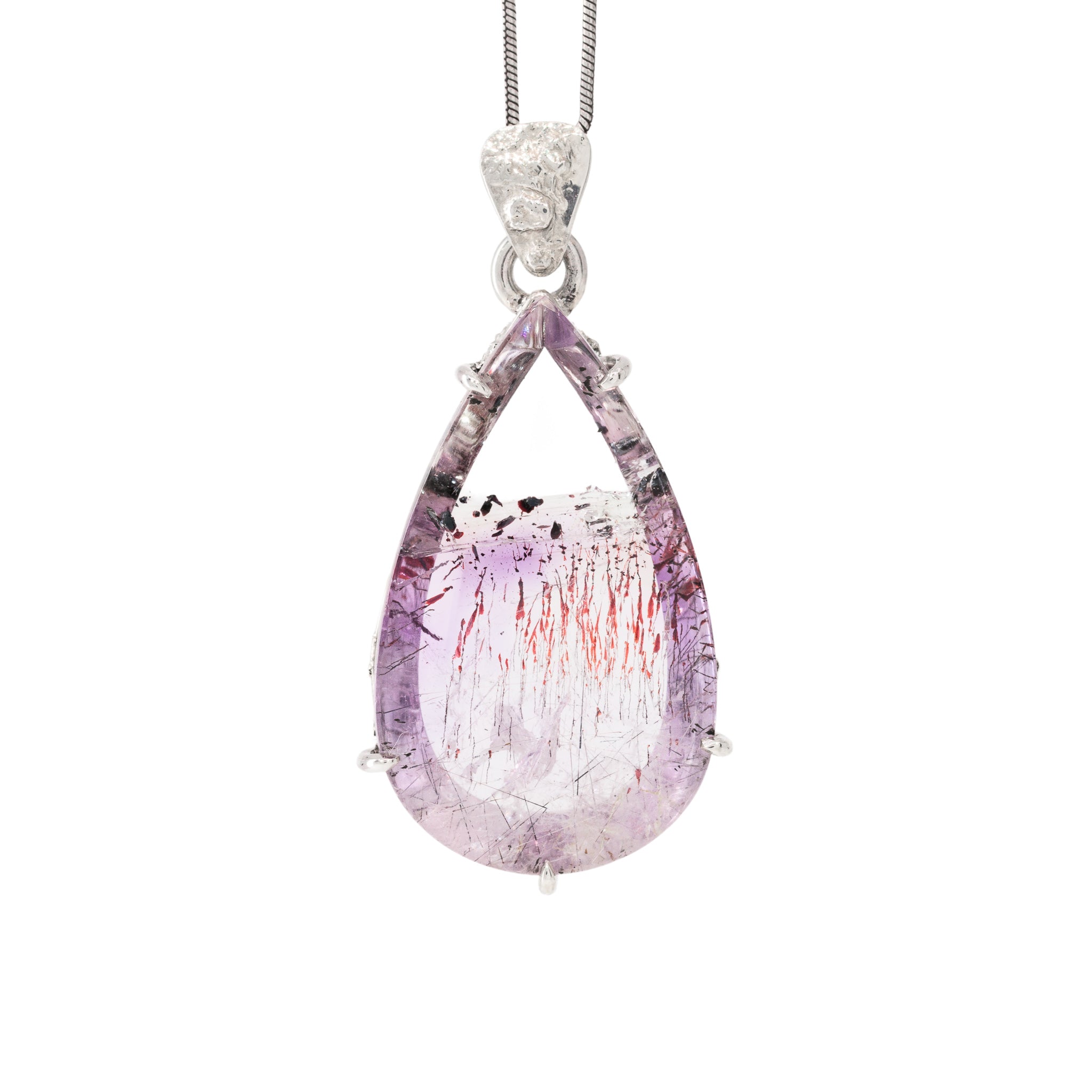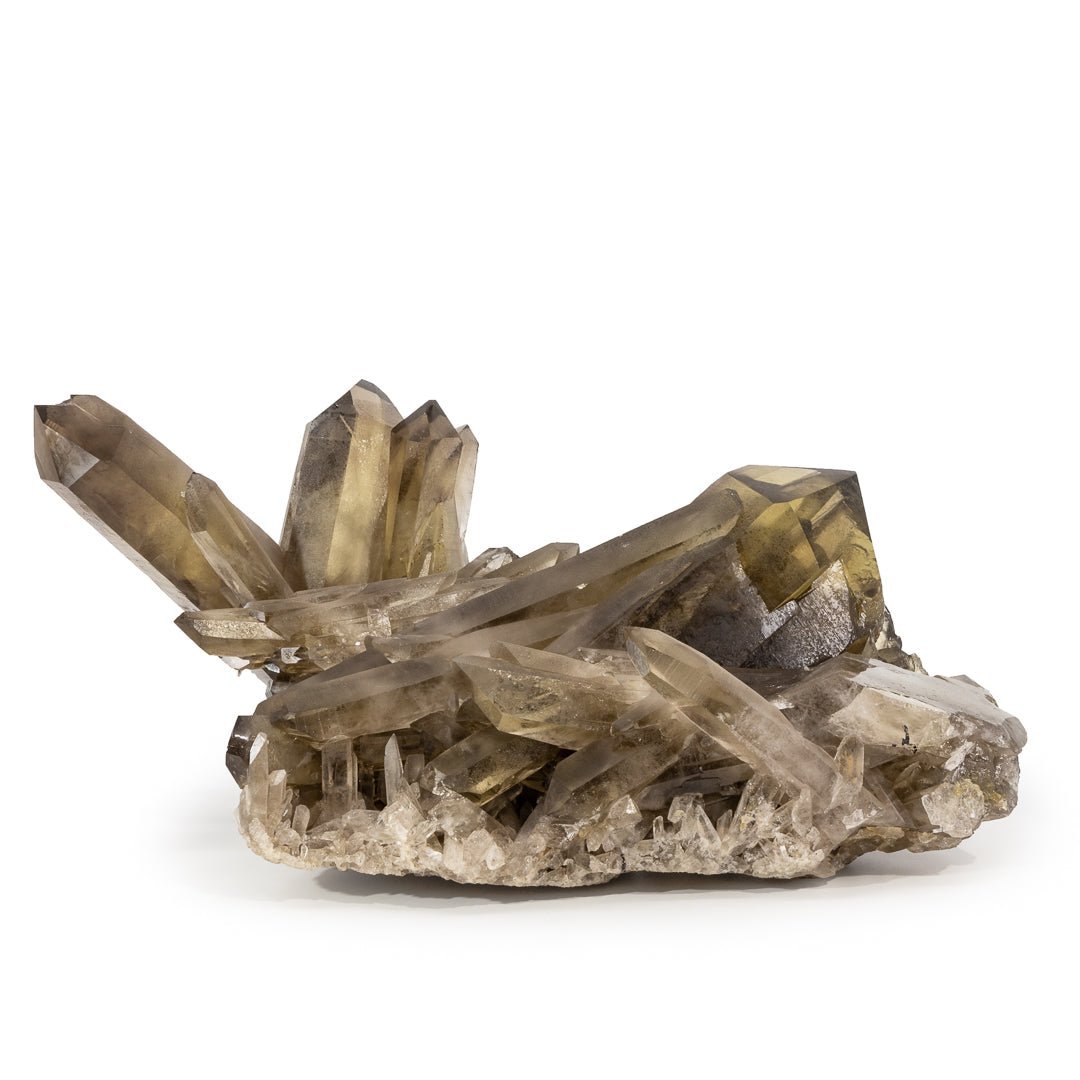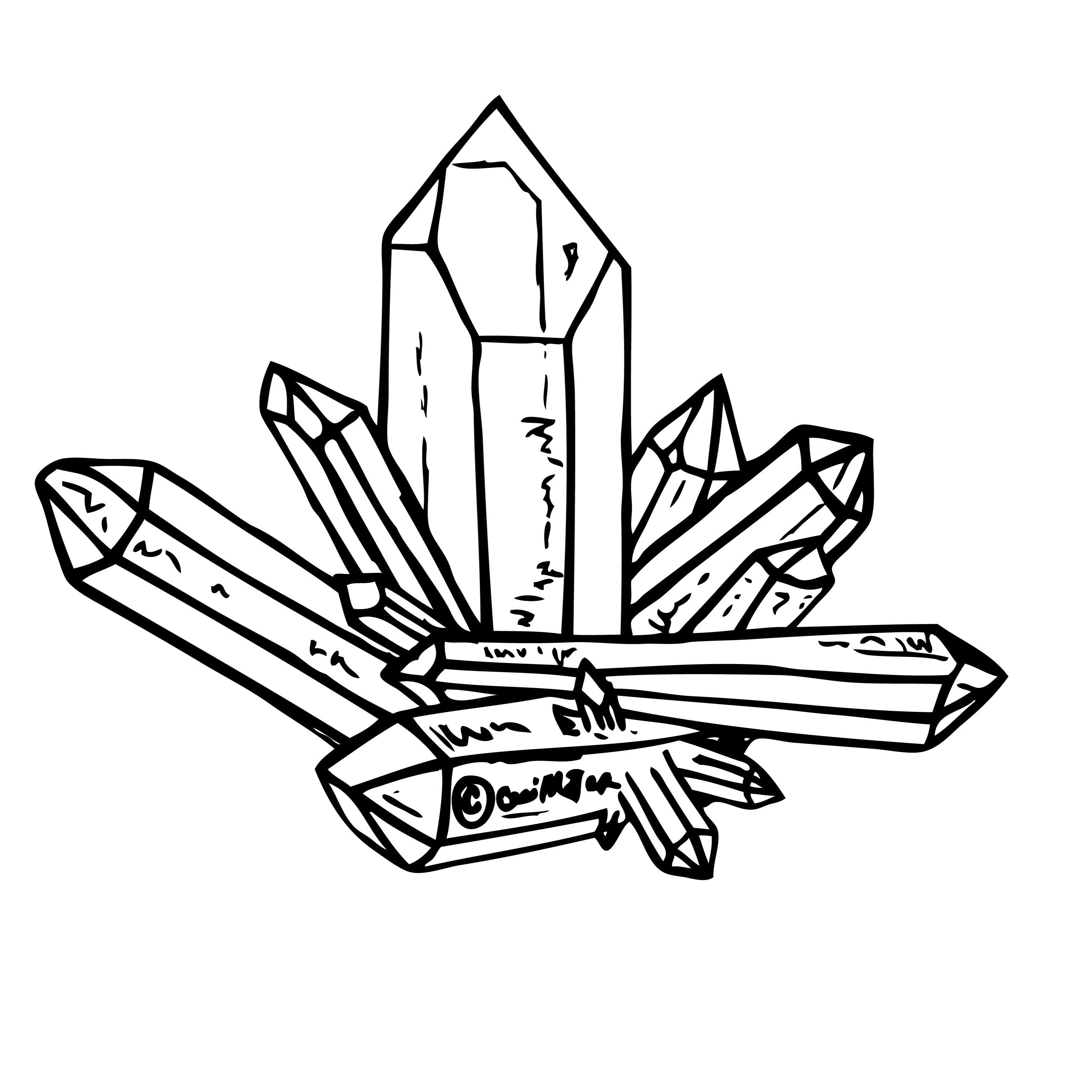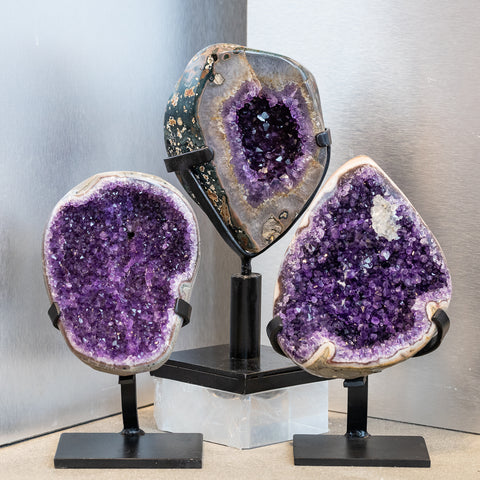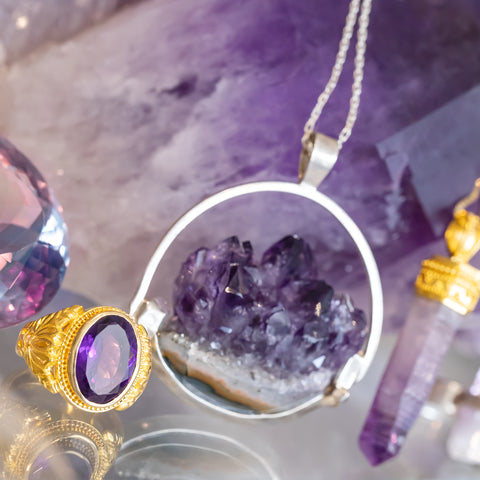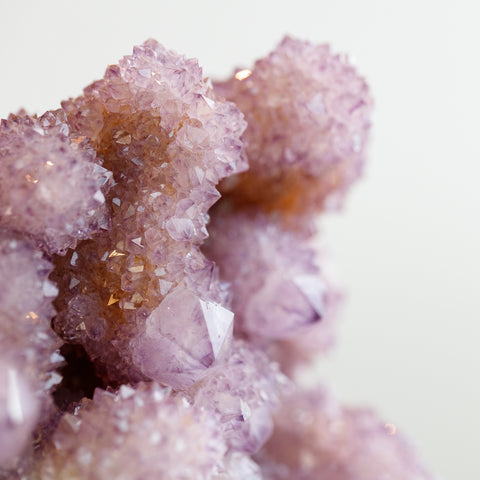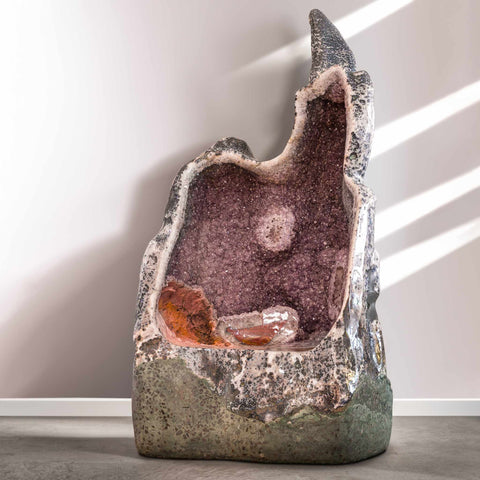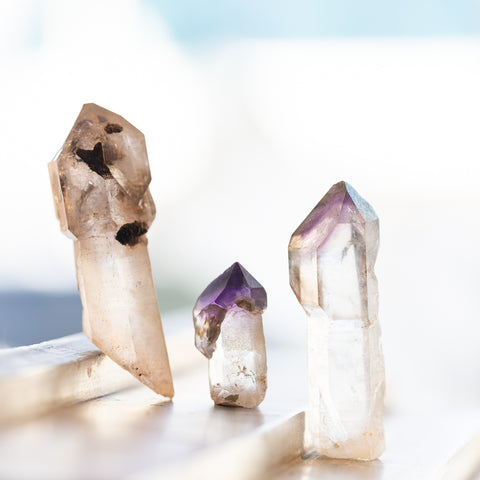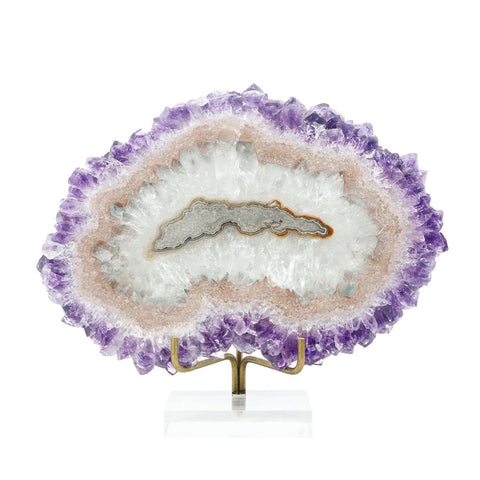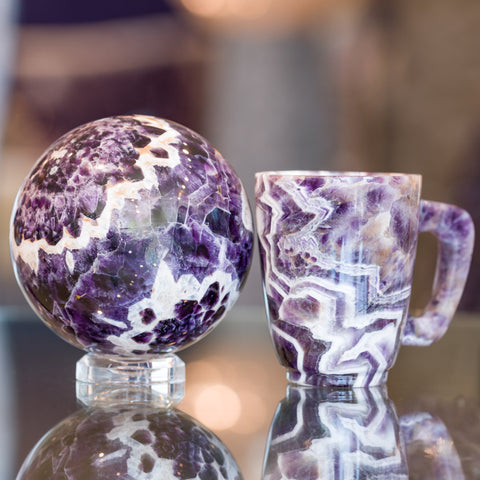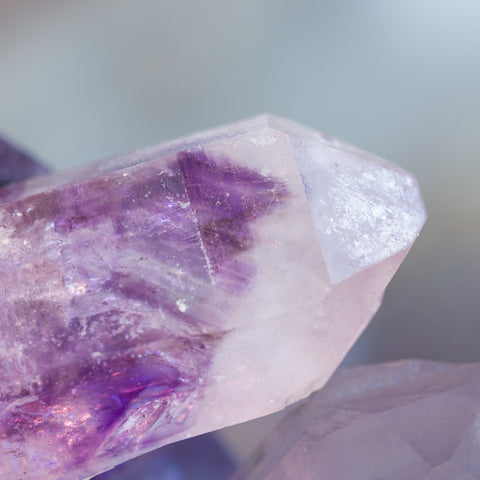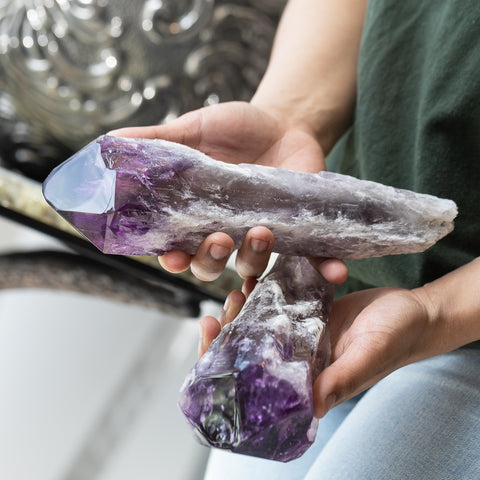
Buckle up, butter cup! We're going down the rabbit hole and we’re diggin’ for amethyst! Why is it so darn popular? What gives it that gorgeous purple color, and why does it grow in so many different weird and beautiful shapes and sizes? We’ll answer all of this and more, with features on specific amethyst varieties.
Contents
| History & Significance | Where is Amethyst Found? | Chemistry of Color | Geodes | Scepters | "Stalactites" | Chevron Amethyst | Phantom Amethyst | Final Thoughts |
Overview
History & Significance
Do a quick Google search for “Amethyst” and you’ll get about 20 different articles that talk about how it’s been used by ancient civilizations for thousands of years, how popular it is in jewelry (guilty as charged 😂), and that it’s one of the quintessential healing stones. This popularity alone is a testament to the stone’s historical relevance and illustrates the ways that it’s worked its way into the hearts of so many crystal lovers. This post is more focused on how amethyst grows, but if you're curious about the history and lore of amethyst, check out this awesome article over on EarthDate.org!
Where is Amethst found?
Deposits of amethyst can be found all around the world, with Brazil and Uruguay leading the pack, especially for large crystals and geodes. Other areas like the USA, Mexico, Bolivia, India and many others also produce lots of beautiful amethyst crystals, each with distinctive qualities that are the result of their distinct geology. These locations have become meccas for a broad range of crystal and gemstone mining, and are where a majority of the amethyst in our gallery comes from.
The Chemistry of Color: Iron & Gamma Radiation
Amethyst is a variety of quartz, but gets its juicy color from trace amounts of iron within the crystal lattice. As the crystal grows, that iron interacts with naturally occurring gamma radiation, which alters the color and transforms the crystal into its distinctive purple glory. Fun Fact: exposure to heat or other forms of radiation can alter amethyst's color even further, leading to the creation of other crystals, most notably amethyst’s golden sibling, citrine. This can happen in the earth’s mantle, or by manmade heating processes…but that will have to be a whole other blog post. 😅
Amethyst Growth Patterns
Amethyst Geodes
Amethyst geodes are essentially sparkly dirt bubbles. As lava cools, sometimes gas bubbles get trapped inside, which creates a pocket. Over time, nearby liquids seep down into the pocket and leave behind traces of silica, which eventually eventually grow into quartz crystals. As these crystals grow, they become saturated with iron and, thanks to a little punch from some gamma radiation, boom! Amethyst geode! This process can extend over thousands of years, and ultimately creates a breathtaking amethyst geode full of sparkling amethyst crystals, sometimes as big as our amethyst throne, and sometimes no bigger than a plum.
Amethyst Scepters
An amethyst what? Scepter crystals start as regular crystals, which act as the base or stem of what ends up looking like something that fairy royalty should be holding. ✨ At some point during the growth of the original crystal, the environment around it changes, causing it to slow down dramatically or stop growing completely. Eventually those conditions change again, this time becoming much better for crystal growth, causing a secondary crystal to form much more rapidly right on top. The order and speed of this process can vary wildly, which is why crystals like these always have such different shapes, colors and personalities.
Amethyst "Stalactites"
The term “stalactite” is a bit of a misnomer in this case. While these gorgeous crystals do look very similar to stalactites, the way they form is a little different. Stalactites form on the ceilings of caves as the result of water droplets leaving behind minerals as they drip downwards. Amethyst stalactites, on the other hand, are a sort of remix of the way geodes and scepters grow - as a secondary crystallization. In this case though, instead of growing around a crystal point, they grow all over the outside of a tube of agate, which is why you see such gorgeous bands of color when you slice them. For a full explanation, check out this great article.
Chevron Amethyst
Similarly to geodes, chevron amethyst usually grows in cavities or fractures in the earth where mineral-rich fluids seep in and begin to crystallize. Unlike with geodes though, chevron amethyst forms in large masses and usually doesn't have perfect crystal points. This unique form of amethyst gets its name from the beautiful pattern that is created by alternating layers of purple amethyst and white quartz, which are caused by…you guessed it…changes in the growth environment. While technically they are amethyst and quartz, it’s all one big crystal growth with a visual history of what was going on in the earth at the time - kinda like the rings on a tree! The resulting V shaped layers are revealed when polished, making for some spectacular spheres, small crystals, goblets, and jewelry.
Phantom Amethyst
By now you’re probably noticing a trend - unique formations are usually the result of some kind of change in the environment around the crystal. Another excellent example of this is phantom crystals. Phantom crystals are essentially the highschool yearbooks of the crystal world, with perfectly defined imprints of themselves frozen inside from years ago. Phantoms can be caused by thin dustings of other minerals that coat the outer surface as it grows, a shift in the mineral saturation nearby, or rapid temperature changes that create tiny air bubbles. So, guess what happens when there’s a sudden influx of iron into the crystal matrix? A perfect purple thumbprint is left behind, eternally preserved inside the crystal.
Final Thoughts
Like people, amethyst’s charm lies in its uniqueness. Also like people, that uniqueness is the result of a myriad of life events that are reflected in the crystal’s shape, size, color, and texture. The influence that our environment has on us; long hibernations that lead to sudden bursts of growth and transformation, or the ability to adapt, are all beautiful ways that we as humans can relate to these ethereal creations. So the next time you’re looking at a piece of amethyst, instead of just seeing its exterior beauty, look a little deeper and try to unravel the story of how it came to be.

